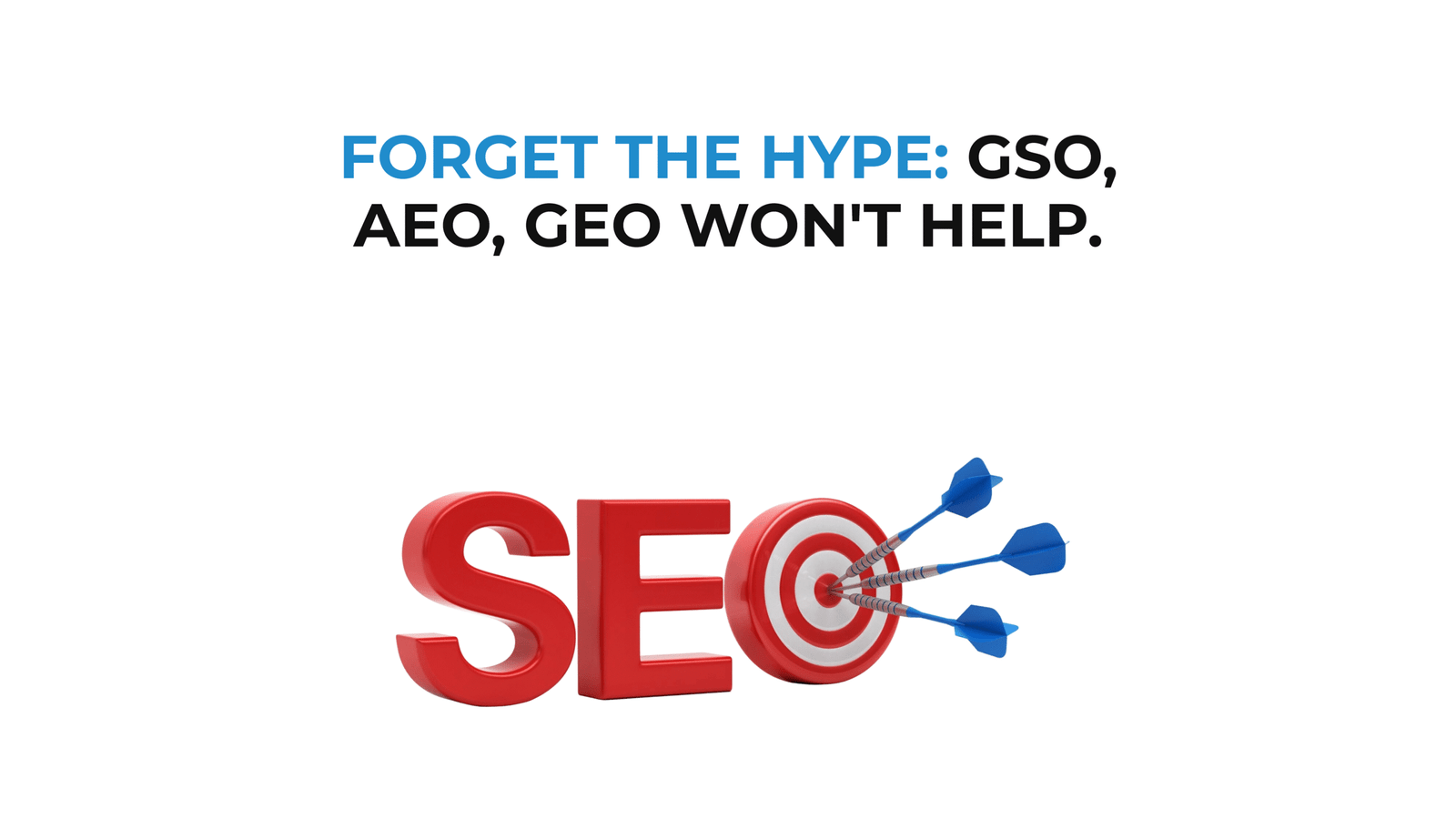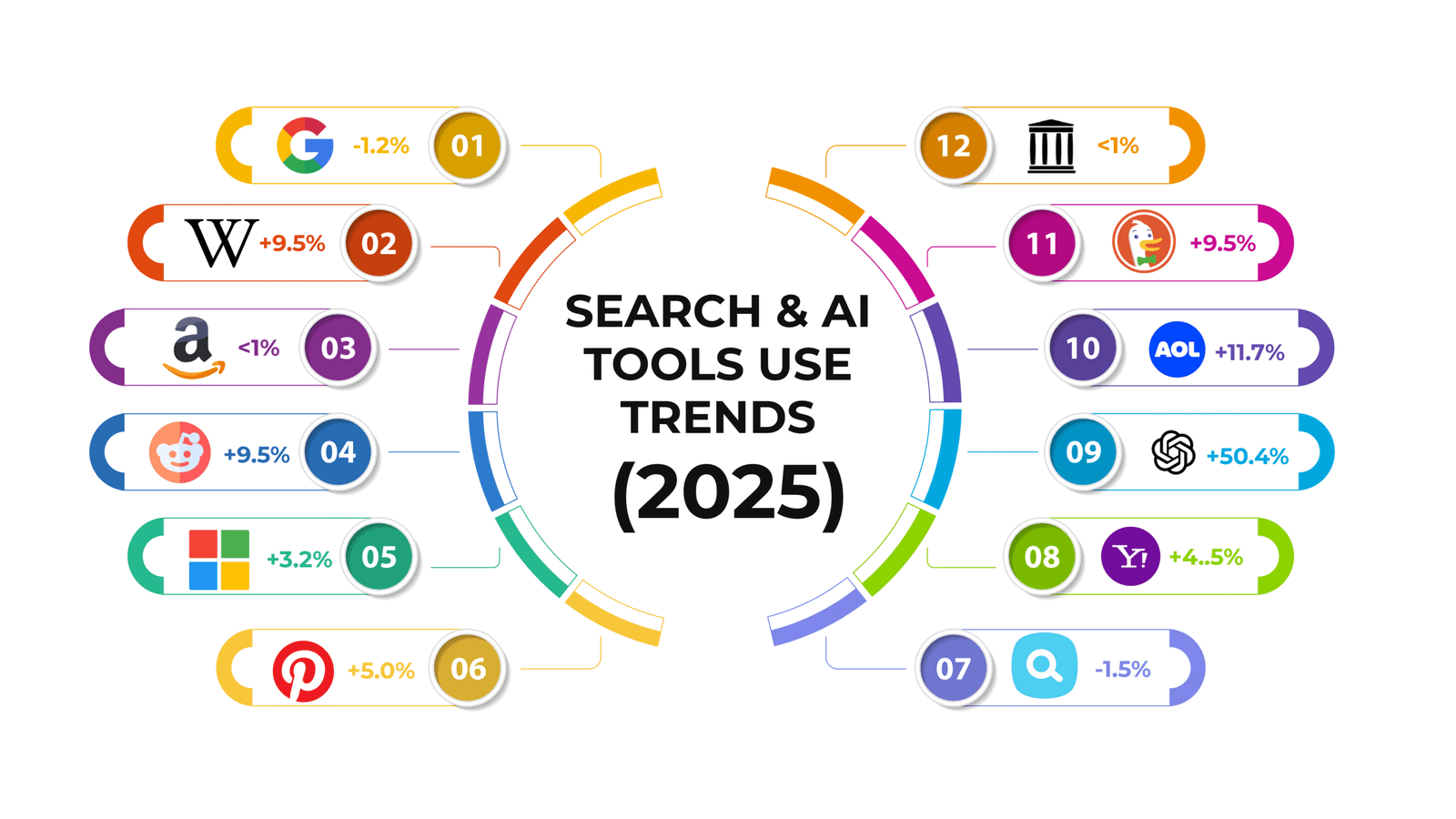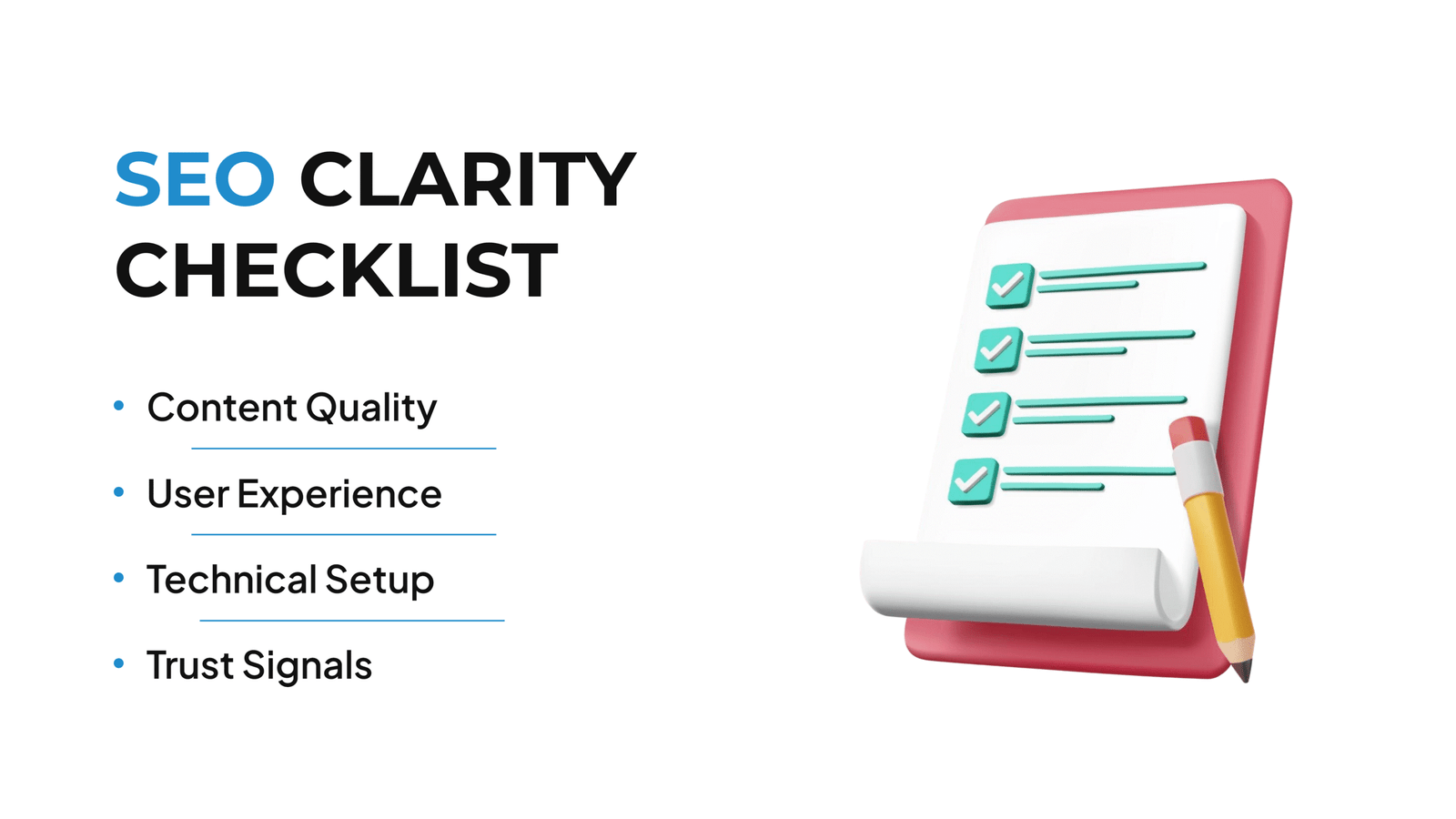
If you’re here, you might think that throwing around shiny new acronyms will fix everything. But that’s not how real success works. GSO (Google Search Optimization), AEO (Answer Engine Optimization), GEO (Generative Engine Optimization) – these are just new names for the same old SEO routine. You can spend hours chasing these trendy terms, but if your website traffic is flat, leads are nowhere to be found, and Google keeps passing you by, there’s a deeper issue. Your SEO isn’t just a little outdated. It’s broken at the core. No shiny new acronym is going to change that.
Stop Creating Meaningless Acronyms (Seriously, It’s Embarrassing)
I agree with Rand Fishkin’s perspective: at its core, it’s still all about SEO, optimizing for search wherever users are looking for information, whether that’s Google, TikTok, YouTube, or emerging AI platforms. Instead of creating unnecessary synonyms, let’s focus on the fundamentals of helping users find what they need across all channels.
Every few years, the SEO industry gets bored and invents new buzzwords. Remember when “content marketing” was going to replace SEO? Now it’s AEO, GEO, and GSO.

Here’s what these mean (and why you shouldn’t care):
| Acronym | What It Means | What It Actually Is |
|---|---|---|
| AEO | Answer Engine Optimization | Structuring content for featured snippets and AI answers |
| GEO | Generative Engine Optimization | Making your content “citable” by AI tools like ChatGPT |
| GSO | Generative Search Optimization | A catch-all for optimizing for AI-powered search |
It may sound impressive, but at its core, it’s simply SEO with additional layers. If your content lacks quality, your website is riddled with technical issues, and you don’t truly understand your audience, no acronym or buzzword will make a difference. Relying on a new term to mask these shortcomings is, in itself, an acknowledgment of defeat.
Why Your SEO Strategy Is Broken (And Why New Labels Won’t Fix It)
Google isn’t fooled by shortcuts or surface-level tactics. Keyword stuffing, low-quality backlinks, and quick content rewrites can’t disguise a site that lacks originality and substance. Audiences are smart. They expect genuine value, relevance, and real solutions..
If you’re searching for a miracle in the form of GSO, AEO, or GEO, it’s likely a sign that your SEO strategy needs a serious rethink.
Here’s why these new trends won’t fix your mess:
1. You’re Still Chasing Shortcuts
You want a quick fix. You want to rank without effort. So you jump from one trend to the next: keyword stuffing, link farms, “SEO content,” now GSO, AEO, GEO. The result? Google sees right through your desperation. Their algorithms are built to reward quality, not hacks.
2. You Don’t Understand Search Intent
The real purpose behind AEO and GSO is to meet user needs, often by providing direct, relevant answers. If your core SEO strategy is flawed, you’re likely missing what users actually want when they search. Are you genuinely addressing informational, navigational, commercial, or transactional intent? Or are you still stuffing keywords into irrelevant pages, hoping Google won’t notice? Applying “generative optimization” to content that targets the wrong intent is like putting a Ferrari engine in a horse cart. It’s costly, mismatched, and ultimately ineffective.
AEO is all about “answering questions.” GEO is about being “citable” by AI. But if you don’t understand what your audience actually wants, you’ll never answer the right questions. You’ll just churn out more useless content that nobody reads or cites.
3. Your Content Sucks
Generative AI tools, the driving force behind the GSO and GEO buzz, are advanced pattern matchers that rely on strong source material. So, what are you giving them to work with? If your content is thin, recycled, plagiarized, overly self-promotional, or hastily written by someone unfamiliar with your industry, the result is: Garbage in, garbage out.
No matter how sophisticated the AI, it can’t transform low-quality input into something valuable. If your content lacks expertise, authority, trustworthiness (remember E-E-A-T?), or real value, AI will only amplify those shortcomings. Summarizing weak content doesn’t make it better. It just gives you a different version of the same problem.
If you’re still paying for word counts instead of quality, you’re the problem. AI and search engines are getting smarter. They reward content that’s actually helpful, not keyword-stuffed fluff.
4. You Ignore Technical SEO
Can Google actually crawl and index your site without issues? Is your site speed more glacial than modern? Is your site architecture confusing and full of dead ends? Are there thousands of broken links or a mobile experience that feels stuck in the past? If your website is technically unfriendly to both users and search engines, no amount of “AEO” or “GSO” will make a difference.
You can optimize for “AI Overviews” all you want, but if your site is slow, your schema markup is broken, and your internal linking is chaotic, your rankings will suffer. Technical fundamentals like schema, structured data, and a clean site structure aren’t optional. They are essential building blocks for any successful SEO, AEO, or GEO strategy.
5. You Chase Algorithms, Not Humans
At the heart of it all ”SEO, GSO, AEO, GEO” the only lasting strategy is to serve your human audience better than anyone else. If your approach has been to chase algorithm updates, manipulate links, or outsmart search engines, you are always fighting a losing battle. With generative AI shaping the future of search, the emphasis on genuine user satisfaction has never been greater. Content that truly helps, informs, and solves real problems is what gets rewarded.
GEO aims for your content to be cited by AI, but authority can’t be faked. If you’re not building genuine expertise, earning quality links, and becoming a trusted resource in your field, you’ll stay invisible to both Google and AI.
SEO Is Still SEO (and You’re Doing It Wrong)
There is no shortcut. There is no secret acronym. There is no “trick” that generative AI suddenly enables that bypasses the decades of proven SEO fundamentals.
- AEO and GEO are not replacements for SEO, they’re extensions. If your SEO is broken, these won’t help.
- The fundamentals haven’t changed: Quality content, technical excellence, authority, and understanding user intent.
- If you’re bad at SEO, you’ll be bad at AEO and GEO too. You can’t optimize for AI if you can’t even optimize for humans.
Chasing every new acronym just shows you don’t know how to build real trust online. It comes off as insecure. A strong site earns authority by being clear, helpful, and confident, not by trying too hard.
Why the New Buzzwords Exist (Hint: It’s Not For You)
The SEO industry thrives on selling you the next big thing. Agencies, tool vendors, and consultants all have a stake in keeping the buzz alive. That’s why they invent new acronyms, flood your feed with LinkedIn posts, and pitch you “the future of search.” But the core principles remain unchanged. If you’re constantly chasing these trends, you’re only making it easier for others to profit from your uncertainty.
You heard some LinkedIn “thought leader” screech that “SEO is dead, long live GEO!” and panicked. That panic is a symptom of your lack of confidence in your own fundamentals.
How Google’s SEO Clarity Checklist Works for SEO
Do you want to rank at the top of search results? Do you want to drive more traffic, generate quality leads, and boost your revenue? You can outrank your competitors by being genuinely more useful, more credible, and more memorable. Stop getting caught up in the latest three-letter buzzwords trending on LinkedIn and focus on delivering real value.

Here’s what actually works, no matter what acronym is trending:
- Understand Your Audience: Do real research. Know what your users want, what questions they ask, and what problems they need solved.
- Create Real Value: Write content that’s actually useful. Not for Google, not for AI, but for real people. If your content isn’t worth reading, it’s not worth ranking.
- Get Technical: Fix your site speed, mobile usability, schema markup, and internal linking. Don’t know how? Hire someone who does.
- Build Authority: Earn real links, get cited by real sources, and become a trusted voice in your niche.
- Optimize for All Channels: Yes, structure your content for snippets (AEO), make it citable (GEO), and use schema. But only after you’ve nailed the basics.
Stop Hiding Behind Trends
If you’re still hoping a new acronym will magically boost your rankings, you’re missing the real lesson. SEO is challenging. It demands effort, expertise, and patience. There’s no shortcut. If you’re not committed to the hard work, you’ll keep chasing trends while your traffic slips away.
The next time someone pitches GSO, AEO, or GEO as the answer to your SEO struggles, remember: no acronym can replace strong fundamentals. Focus on what matters. Fix your foundation, put in the work, and build real value. Because at its core, it’s always been about doing SEO well. You’re either mastering it, or you’re not.
GSO, AEO, and GEO are just new coats of paint on the same, solid house you should have been building all along. If your foundation is weak, a fresh coat of paint won’t stop it from falling apart. It only hides the cracks for a little while longer.

Nevil Bhatt
Nevil is the owner of one of the fastest-growing digital marketing agency in India. Having a great knowledge of the IT field and business management, he decided to bring a revolution in the digital world by providing valuable and customised solutions across the globe. Whether it's real or digital, he knows how to handle sustainable relationships and meaningful interactions.




